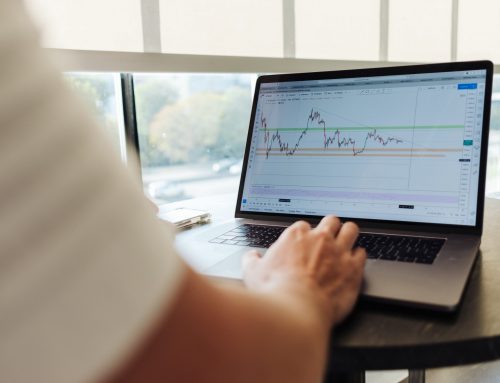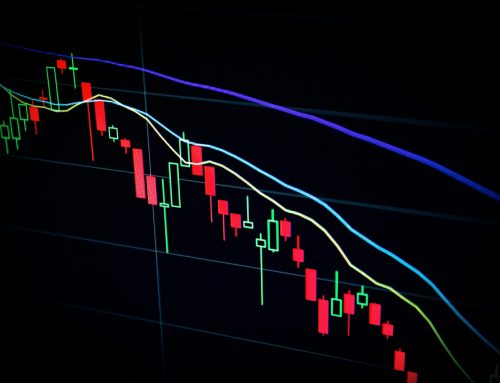Understanding volatility is crucial for your investment success, as it influences not the risk profile of your investment but your return. What does volatile mean in stocks, though – and how can you spot volatility before making a trade?
We’ll guide you through how to find volatile stocks today in this guide so you can feel confident harnessing the power of volatility and looking at it as an advantage rather than a concern.
And if you’re wondering, what are the most volatile stocks today? VectorVest’s stock analysis software is just a few clicks away ready to help you find winning opportunities on autopilot.
You can cut through the noise and effortlessly identify stocks with high (or low) volatility at any given time with precision and confidence. Get a free stock analysis today and see how it works!
Volatile Stocks Meaning: What Does Volatile Mean in Stocks?
First, let’s talk about the volatile stocks meaning to help you understand the concept of volatility itself. So, what does volatile mean in stocks?
Defining Volatility in the Context of the Stock Market
Volatility in the stock market refers to the frequency and magnitude of a stock’s price movement. It’s a statistical measure often gauged by the standard deviation or variance between returns from that stock or market index.
When a stock is described as ‘volatile’, it means its price can change dramatically over a short period, either up or down. High volatility often characterizes markets with rapid and significant price fluctuations, whereas low volatility indicates steadier and less dramatic changes in stock prices.
In essence, volatility is a reflection of the uncertainty or risk associated with the price change of a stock. It’s a critical factor that investors and traders monitor closely because it impacts the potential return on an investment.
While it often carries a negative connotation, volatility is not inherently bad. Rather, it’s a feature of the market that can present both risks and opportunities. Here’s how you can use it in your trading strategy…
How Volatility Impacts Investor Decisions
Risk-averse investors may see high volatility can be a deterrent, as it implies greater risk and uncertainty. Such investors may prefer stocks or sectors with lower volatility, seeking more predictable returns over time.
Conversely, risk-tolerant investors might seek out stocks with high volatility as they offer the potential for higher returns. These investors are willing to accept the possibility of substantial losses in exchange for the opportunity to make significant gains.
Understanding volatility also aids in portfolio diversification. A well-diversified portfolio will typically include a mix of assets with varying levels of volatility, balancing potential risks and rewards. This is especially important in configuring your retirement asset allocation.
Furthermore, market volatility can inform market timing strategies. Some investors may look to buy during periods of high volatility when prices are low, and sell when volatility decreases and prices stabilize.
What are the Most Volatile Stocks Today?
Maybe you came here only interested in uncovering stocks with the highest volatility right now. So, what are the most volatile stocks today? We’ll share the top 10 below.
But keep in mind that this should be taken with a grain of salt – these conditions will change rapidly. That being said, you’ll want to stay tuned for after these lists as we teach you how to find volatile stocks on any given day:
- Saigmet Biosciences Inc.
- Brera Holdings PLC
- Virios Therapeutics, Inc.
- Gulf Resources
- Rail Vision Ltd.
- Processa Pharmaceuticals
- Phunware, Inc.
- Digital World Acquisition Corporation
- Marpai, Inc.
- Panbela Therapeutics, Inc.
Keep in mind that volatility doesn’t mean these stocks are moving in the right direction. For context, Saigment Biosciences (SGMT) is up 170% today – meanwhile, Processa Pharmaceuticals (PCSA) is down a whopping 44%. That being said, let’s look at the other side of the coin below.
What are the Least Volatile Stocks Today?
What if you want the safest stocks for retirement with steady dividends and slow growth? If you’re searching for the low volatility stocks today, here is what we’re seeing at the time of writing:
- Proctor and Gamble Co.
- Merck and Co. Inc.
- Verizon Communications Inc.
- Bristol-Myers Squibb Co.
- Colgate-Palmolive Company
- Duke Energy Corp.
- Roche Holding Ag
- Gilead Sciences, Inc.
- Xcel Energy Inc.
- Hershey Co.
You’ll notice these are huge names that have weathered centuries of business in some cases. They are huge conglomerates that own myriads of brands, or in some cases, are borderline monopolies that aren’t going anywhere anytime soon. Such is the case of most stocks with low volatility.
How to Find Volatile Stocks Right Now
If you give a man a fish he’ll eat for a day…but if you teach that man how to fish, he’ll never go hungry again. So rather than just showing you the least or most volatile stocks today, let’s take things a step further.
After all, the most volatile stocks today (and the least volatile, for that matter) will likely not be the same day in and day out. We’ll walk you through how to find volatile stocks right now on your own, so you can weave this consideration into your trading strategy going forward.
Utilizing Technical Analysis to Identify Volatility
Learning technical analysis is step one to effortlessly identifying volatility. So, how does technical analysis work? It involves scrutinizing stock charts to observe trading patterns and predict trends that may indicate future price movements. Key elements to focus on include:
- Price Fluctuations and Chart Patterns: Stocks with high volatility often exhibit sharp price changes over short periods. Look for patterns like rapid upswings or downswings, breakouts above resistance levels, or breakdowns below support levels.
- Volatility Indicators: Utilize tools like the Average True Range (ATR), which measures the degree of price volatility, or Bollinger Bands, which provide a relative view of high and low prices. A wider gap in the Bollinger Bands can signal increased volatility.
- Volume Analysis: An abrupt increase in trading volume can precede significant price movements. High volume coupled with substantial price changes often signals increased volatility.
You can learn more about how to do technical analysis of stocks in our blog. We have resources on the best indicator for swing trading and stock technical indicators in general, such as stochastic oscillators, MACD, or candlestick patterns.
Applying Fundamental Analysis for Deeper Insights
Fundamental analysis provides a different perspective on volatility, focusing on a company’s intrinsic value and its potential impact on the stock’s price. Knowing how to do fundamental analysis of stocks is critical to rounding out your research.
Examine the company’s earnings, revenue growth, debt levels, and profitability ratios. Companies with strong, stable financials might be less volatile, whereas those with weaker financials might exhibit more volatility.
Some industries are inherently more volatile due to rapid innovation or regulatory changes (like technology or pharmaceuticals). Identifying these trends can help pinpoint stocks with high volatility.
Again, you can dive deeper into the differences between technical analysis vs fundamental analysis in our blog if you’d like. We even have tips on how to combine fundamental and technical analysis.
Analyzing Investor Sentiment
Market sentiment can significantly influence stock prices. This essentially speaks to how the market as a whole feels about a given stock (or segment, or the market as a whole for that matter).
So, pay attention to how news and media coverage affects investor perceptions. Positive news can lead to price spikes, while negative news can cause declines.
Platforms like Twitter and stock market forums can provide real-time insights into investor sentiment. A sudden surge in discussions or sentiment shifts around a stock can precede volatility.
Screening for Stocks With High Volatility
Stock screening is a vital step in isolating stocks with high volatility from the broader market. It also brings opportunities right to your fingertips so you don’t have to go chasing down opportunities.
Set criteria such as high beta (a measure of volatility relative to the market), significant price fluctuations over a specified period, and above-average trading volume.
Better yet, utilize online stock screening tools to filter stocks based on these parameters. Some platforms allow for real-time screening, offering a more dynamic approach to identifying stocks with high volatility.
You can learn more about how to scan stocks for swing trading in our blog if you’d like. In the meantime, we want to show you how to find volatile stocks in a far simpler, more intuitive way with VectorVest…
How VectorVest Simplifies Finding the Most Volatile Stocks at Any Given Time
There you have it – how to analyze a stock for volatility! As you can see, there is a lot that goes into learning how to find volatile stocks. Wouldn’t it be nice if you could rely on technology to do all the heavy lifting and just deliver actionable insights to your screen?
That’s what our stock advisory does!
VectorVest has outperformed the S&P 500 index by 10x over the past 20 years and counting. It’s a proprietary rating system that tells you what to buy, when to buy it, and when to sell it – eliminating guesswork, uncertainty, emotion, and human error from your investing strategy.
It can bring you the best swing trading stocks or stocks to trade options with, good stocks for beginners, or anything else that aligns with your trading style. But how does it work?
The VST system is comprised of 3 simple ratings: relative value (RV), relative safety (RS), and relative timing (RT). Each sits on a scale of 0.00-2.00 with 1.00 being the average. This makes interpretation quick and easy – pick safe, undervalued stocks rising and price and win more trades with less work!
As it pertains to volatility, though, you can pull the best opportunities up on any given day through our pre-curated stock scanners. You can choose stock ideas like high-momentum stocks or the biggest movers. Or, just sort by the RT rating and look for stocks rapidly rising or falling to capitalize.
VectorVest is the best swing trade alert service and the best stock analysis app in general. With a risk-free 30-day trial, what do you have to lose? It’s time to transform your trading strategy for the better!
Advantages of Trading Stocks With High Volatility
The advantages of volatility are obvious for those implementing a swing trading strategy. You can capitalize on the volatility as entry and exit points for your trade! Here are all the reasons to consider using volatility to your advantage as a trader:
- Significant Profit Potential: High-volatility stocks often experience large price swings, which, if timed correctly, can result in significant profits in a relatively short period. Savvy investors can capitalize on these fluctuations, buying low and selling high.
- Short-Term Opportunities: For those who prefer short-term trading strategies like swing trading vs day trading, volatile stocks provide numerous opportunities for quick trades. Their rapid price movements can be advantageous for capturing gains from short-term market trends.
- Diversification Benefits: Including high-volatility stocks in your portfolio can offer diversification benefits. When combined with lower-risk investments, they can contribute to a balanced investment approach, potentially increasing overall returns while spreading risk.
- Market Reflection: Volatile stocks often mirror broader market trends and sentiment, providing informed investors with insights into market dynamics. By understanding these patterns, traders can make more educated decisions based on market behavior.
That being said, you should be aware of both the good and the bad when it comes to volatility. Here’s what you need to consider from a risk management perspective…
Managing Risk in Volatile Stock Investments
Whether you’re swing trading or buying the dip, risk management is an important aspect of your decision-making. This is even more important when dealing with stocks that exhibit high volatility. Here’s how to mitigate risks associated with high-volatility investments:
- Setting Stop-Loss Orders: Implementing stop-loss or take-profit orders can limit potential losses and help you avoid getting greedy and watching a winner turn into a loser. You set a predetermined sell point for a stock. If the stock hits this price, it is automatically sold, thus preventing further loss. This eliminates the guesswork and emotion associated with when to sell a stock for profit or when to cut losses.
- Position Sizing: Investing only a small portion of your portfolio in these high-risk assets can prevent significant losses.
- Continuous Monitoring: High volatility stocks require constant monitoring due to their rapid price changes. Staying informed about market conditions and company-specific news can help in making timely decisions to maximize gains or minimize losses.
- Diversification: Diversifying your portfolio across various sectors and asset classes can reduce the risk of heavy losses from a single volatile stock. This approach spreads out potential risks, providing a safety net against market volatility.
- Understanding Underlying Factors: Being well-informed about the factors driving a stock’s volatility – such as sector trends, economic indicators, or company performance – can aid in anticipating market movements and making smarter investment decisions.
- Paper Trading: Before diving into real-world trading, using stock paper trading can help in understanding the behavior of high volatility stocks without actual financial risk. This practice can be invaluable for developing effective trading strategies.
Wrapping Up Our Guide on How to Find Volatile Stocks
That concludes our guide on how to find volatile stocks. As you can see, finding stocks with volatility involves a blend of technical and fundamental analysis, alongside keen insight into market sentiment and economic indicators.
By understanding these elements and applying effective screening techniques, investors can identify stocks with high volatility potential. However, it’s essential to balance the lure of high returns with prudent risk management strategies.
You can learn more about how to select stocks for swing trading, swing trading options, the best time of day to buy stocks, should I buy stocks when they are low or high, why you don’t need a financial advisor, investing in a down market, or is a financial advisor worth it in our blog.
Otherwise, now that you know how to pick a stock with high or low volatility, it’s time to experience the best swing trading platform in action. It’s not just an essential swing trading tool, though. You can use it for position trading or to reap the advantages of investing early for retirement.
No matter your goals, you can use VectorVest to save time and stress while boosting your success rate. So, get started today as we wrap up this guide on how to find volatile stocks!







Leave A Comment